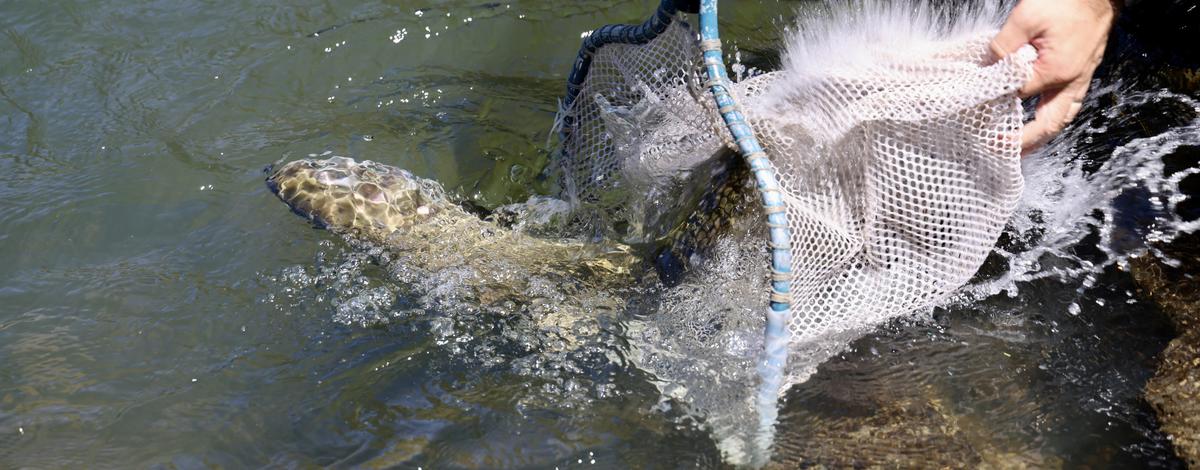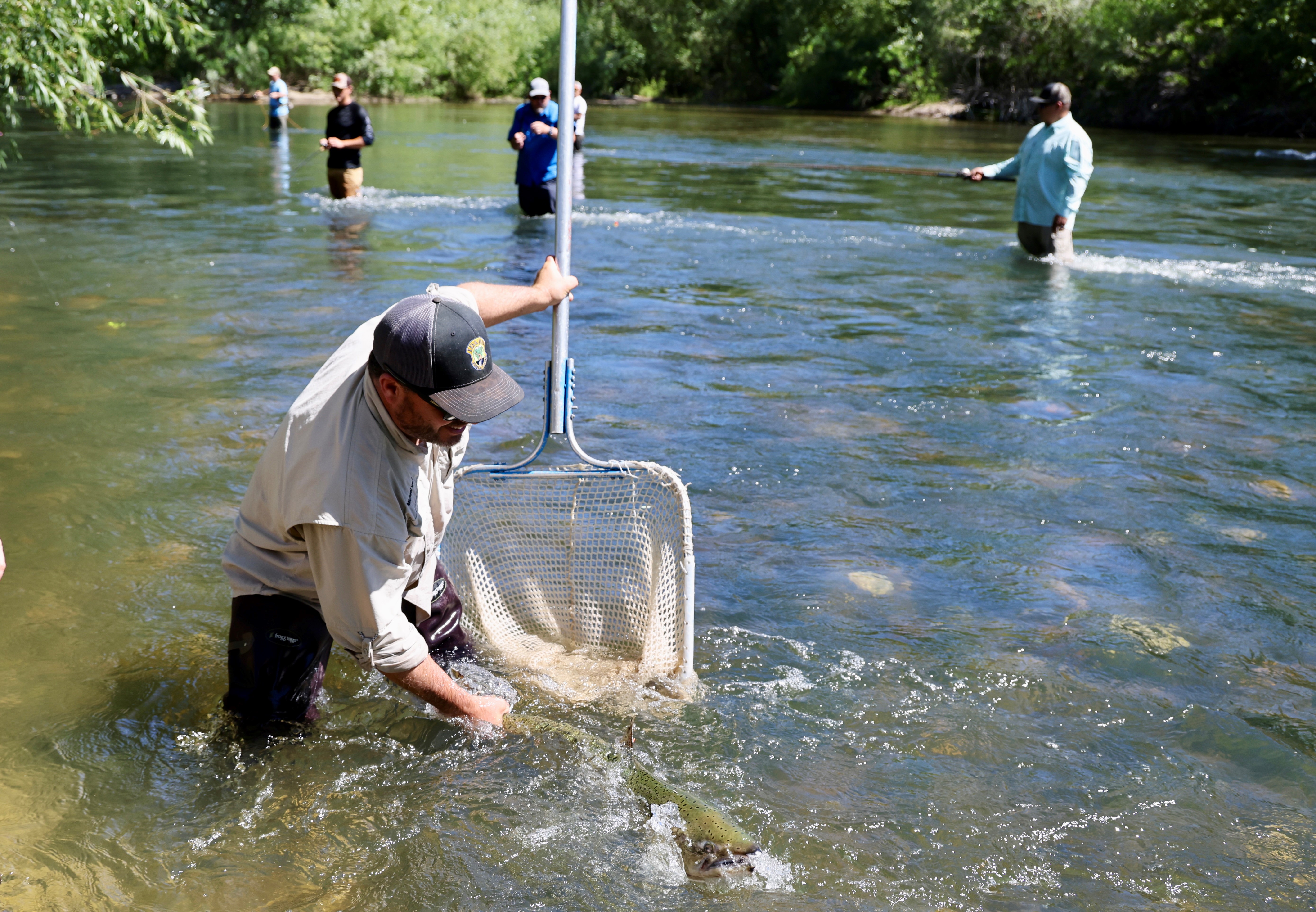Chinook fisheries in the Boise River elicit great joy for some anglers, and frustration for others. The Boise River Chinook releases create opportunities for people who cannot or will not travel to the waters where Chinook return naturally. Fish and Game staff fields a lot of calls and emails about Boise River Chinook, so we wanted to provide some answers to commonly asked questions.
Anglers want to know how we end up with “surplus” Chinook salmon at our hatcheries. First it is important to know there is no such thing as a “surplus” Chinook salmon. We put every fish to good use, whether that be table fare for successful sport anglers or tribal fishers, contributing to hatchery broodstock to make the next generation of hatchery fish, meeting ceremonial and subsistence needs of the tribes in Idaho, outplanting adults for natural spawning or nutrient enhancement, supplying foodbanks with healthy salmon, or transporting fish to other rivers/reservoirs to create additional fishing opportunities.
Many of these outlets were utilized in 2023. However, the one that drew the most attention from anglers was planting Chinook from Rapid River Hatchery into the Boise River.
Why are there surplus Chinook salmon at hatcheries?
Meeting broodstock needs at the hatcheries is the top priority and fisheries are managed with that in mind. Chinook trapped at the hatchery that are not used for broodstock are considered surplus and surplus fish can occur for several reasons.
The first reason is that we trap a lot of “jacks” which are male fish that spent just one year in the ocean compared to their adult counterparts that spend two to three years in the ocean. Jacks are not part of the harvest share, are generally not used for broodstock, and make up a large percentage of the surplus fish stocked in places like the Boise River.
While fisheries managers work hard to get accurate estimates of adult Chinook salmon returns and harvest, we know the estimates are not perfect. It is important to realize this error goes both directions and in some years abundance is overestimated or harvest is underestimated leading to situations where very few if any surplus Chinook are available.
Because all estimates have a margin of error, it’s a combination of things that fisheries managers are trying to work with to ensure broodstock is met while minimizing surplus Chinook salmon at Fish and Game hatcheries. When surplus adults are trapped at Rapid River Hatchery, they usually make up less than 10% of the total number of adults returning to the trap for the season.
Why can’t the season re-open below hatcheries so anglers can continue to fish on the “surplus” fish?
Generally, by the time sport and tribal fisheries are closed and broodstock needs are met, we start to accumulate surplus fish late enough in the summer that reopening fisheries is not a preferred option. Most of the fish are out of the system and the water temperatures are getting warmer. This means that reopening fisheries below terminal hatchery traps would require recycling fish multiple times through less ideal river conditions.
While recycled fish are harvested, they are harvested in the sport fisheries at a low level so recycling results in minimal additional adult harvest and handling fish multiple times at the hatcheries. Fish quality begins to deteriorate as water temperatures increase resulting in low levels of interest from most anglers.
Why is the Boise River chosen as the location to outplant surplus fish?
The Boise River is chosen as a location to release Chinook Salmon for several reasons. The first is the Boise River has cold water all summer due to releases from Lucky Peak Reservoir. This maintains good flesh quality for the lucky anglers who catch any of the outplanted fish.
The second reason is that with the large population base in the Treasure Valley, lots of people turn out to fish for Chinook Salmon which increases the chances that fish will be caught and utilized by anglers.
The Boise River also has abundant access meaning it’s easy for Chinook anglers to find a place to fish. It’s also important to remember that the hatcheries that regularly contribute to Boise River Chinook and steelhead outplants are mitigation hatcheries that were built to offset fishery losses from the construction and operation of the Hells Canyon Dam complex, so it makes sense to bring some of those returning fish back to the Boise River.
We know that Chinook salmon are extremely important to the citizens of Idaho. Hopefully this article has cleared up some of the confusion about surplus fish, why we have them, and options we have for putting them to use.


